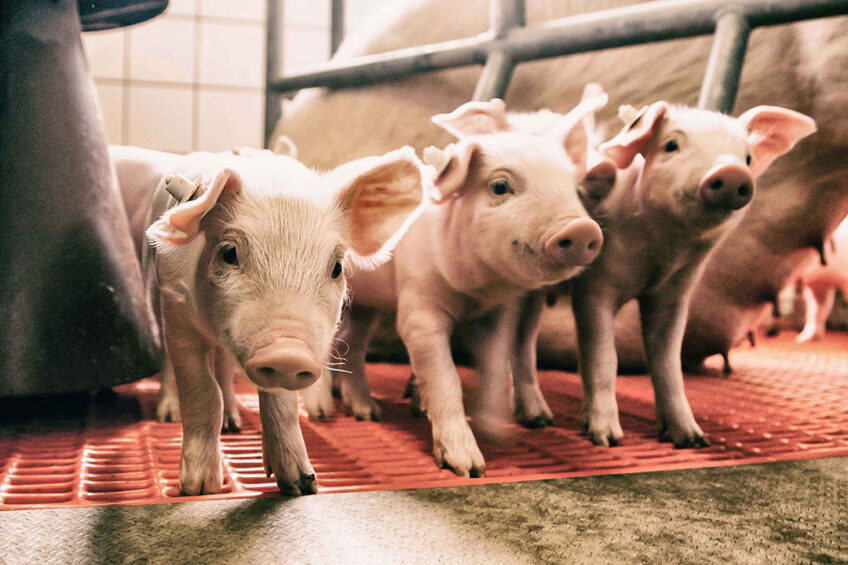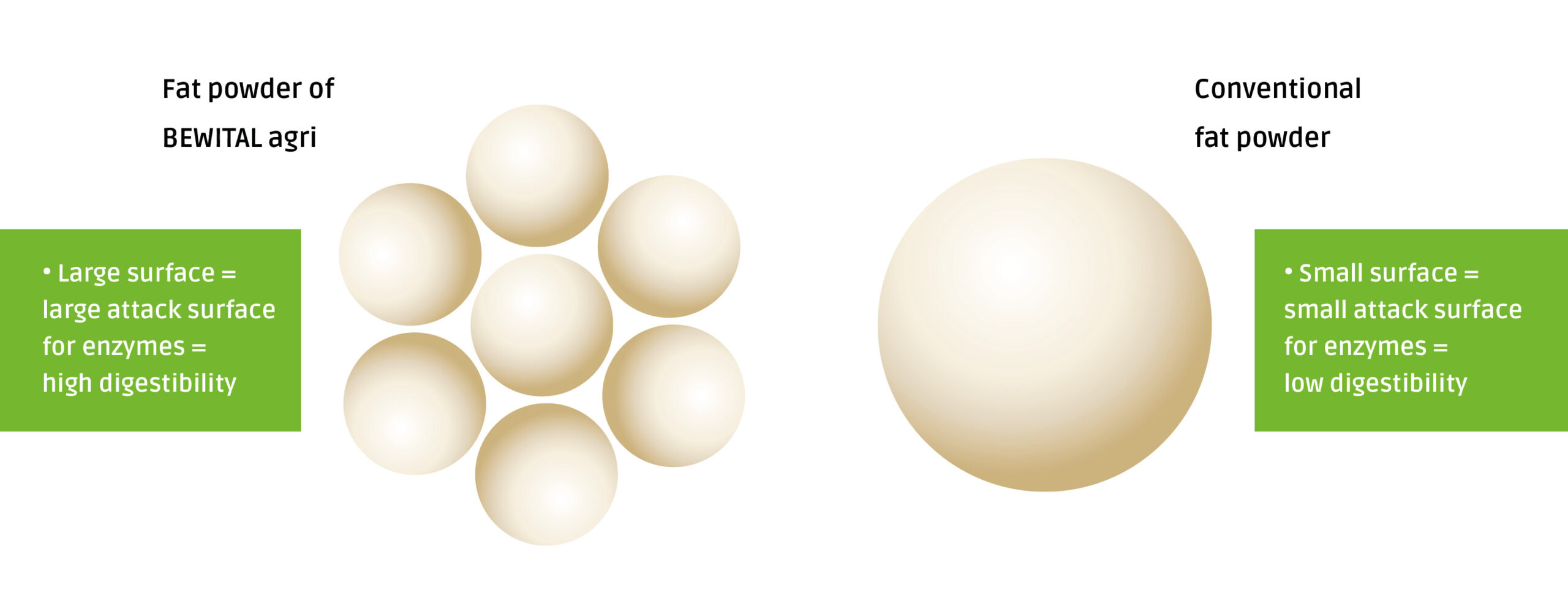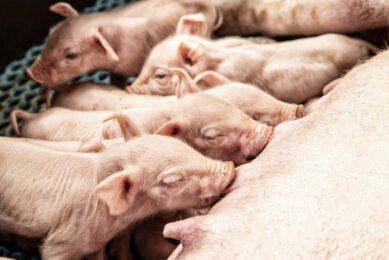Fat powders offer many advantages for pigs

Fat powders offer an optimal opportunity to add energy to pig feed rations due to their diverse areas of application.
Oils and fats are the components with the highest energy content in compound feed. They serve as a source of energy, a storage medium, and assist in the synthesis of membranes and the absorption, synthesis and transport of hormones and vitamins. The good digestibility of fat powders in rations for pigs is also proven by a recent study in which the effects of different fat sources on the energy digestibility of young piglets were investigated.
Fats are usually used up to 6% in swine diets, varying between 1% and 3% in fattening and up to 6% in piglet and sow diets to increase the energy density of the feed. The ability to digest the fat contained in the feed is low in young piglets but increases with age. However, the fat sources and quality in combination with the age of the piglets are crucial factors for digestibility.
The fat used in the ration must be of the highest quality and be easily digestible. Often lecithin is used to increase the digestibility of the fats and other nutrients in the rations. Lecithin has emulsifying properties and contains natural choline, which plays a crucial role in fat metabolism.
Origin and quality varies
In practice, different fat sources are used. These range from raw, unrefined (vegetable) fats and fatty acid mixtures to high-quality refined fats and whey fat concentrates. Refined and hydrogenated fats are storage stable and are stable to oxidation. They do not become rancid even after prolonged storage. However, fat powders are often assumed to be less digestible than classic whey fat concentrates. However, since they differ significantly in their composition and particle size distribution, this has a considerable influence on digestibility.
Special feed producer Bewital agri has been producing spray-cooled fat powders based on refined, hydrogenated vegetable fats (based on palm or rapeseed oil) for many decades. As the largest producer of fat powders in northern Europe, the company relies on a specially developed spray-cooling process (cryotechnology) to produce finely crystalline fat powders. Due to the fine structure and the resulting large surface area, Bewi-Spray fat powders and Bewi-Pig whey fat concentrates are highly digestible and ideal for storage and processing. This is also confirmed by a recent study at the Technical University of Bingen.
Digestibility study confirms good energy digestibility
The digestibility study was conducted at the research station of the Technical University of Bingen. The weaned piglets (age 28 days, breed DanBred x Pietrain) had an initial body weight of 12.8 ± 0.4 kg at the beginning of the experimental phase. A total of 24 castrated male piglets were selected and divided into 4 treatment groups of 6 animals each.
To a basal diet of wheat, maize, barley, soybean meal and rapeseed meal, a further 3% oil or fat from the different fat sources to be tested was added to the experimental diets. The 4 different fat sources in this digestibility trial represent a wide range of typical fat sources. The soya oil in variant (V) 1 consists mainly of unsaturated long-chain fatty acids (≥C18), the palm oil in the whey fat concentrate in V2 consists of unsaturated and saturated long-chain fatty acids (≥C16), the palm oil in Bewi-Spray 99 L in V3 consists mainly of saturated long-chain fatty acids (C16:0/C18:0) due to the hydrogenation process. Bewi-Pig 80 L in V4 also consists mainly of saturated long-chain fatty acids (C16:0/C18:0) and contains saturated short-chain fatty acids due to the addition of coconut oil. All diets had the same fat and lactose content and were isoenergetically optimised.
No differences between the variants
Despite this broad spectrum and the different fatty acid patterns of the feeds, there were no significant differences in energy digestibility between the 4 different fat sources in the study (Table 1). In contrast to the literature, which mostly attributes better digestibility to short and medium-chain fatty acids than to long-chain fatty acids, no differences could be found in the present study. Likewise, no differences in energy digestibility could be found between the variants with more saturated than unsaturated fatty acids. Since energy digestibility was not influenced by the fat source, this indicates that the piglets were able to utilise the same energy from all fat sources.
Although the rations with Bewi-Spray 99 L and Bewi-Pig 80 L consist predominantly of long-chain, saturated fatty acids, they show the same energy digestibility as soya oil and whey fat concentrate in the present study. Both products contain lecithin (8% and 5% lecithin on a product basis, respectively) and support emulsification. This is necessary for fat digestion, as fat is insoluble in water and difficult to digest in a watery environment such as the gastrointestinal tract.
In addition, the digestibility of fat powders strongly depends on the particle size and the surface area of the particles. A reduction in particle size leads to an increase in surface area relative to mass. Results from literature show that the digestibility of fat powder increases significantly with decreasing particle size. The larger surface area automatically leads to higher digestibility as it provides a better surface area for enzymes such as lipase.
Figure 1 – Advantages of Bewital fat powders

Bewital agri fat powders are highly digestible
Even young piglets can digest the energy from Bewi-Spray 99 L and Bewi-Pig 80 L well and achieve a high-performance level (growth). The refined and hydrogenated vegetable fats, which are additionally enriched with lecithin, are thus an optimal component to close the energy gap that exists especially in piglet rations and in the feeding of lactating sows with high-energy and easily digestible ingredients. A valuable contribution to maintaining performance in all types of production.



